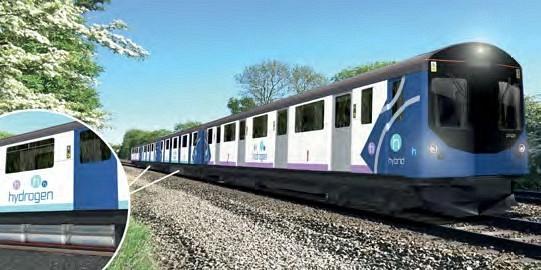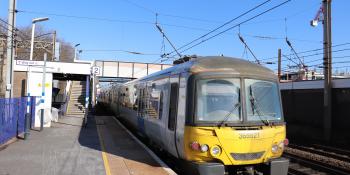FUNDING FOR SWR ‘158’ AND HYDROGEN ‘230’ PROJECTS

A PROJECT to apply automotive after-treatment systems to a South Western Railway Class 158 and development of a hydrogenpowered Class 230 are among five programmes awarded Innovate UK funding by the Government through the Department for Transport’s First of a Kind (FOAK) competition.
Each project has been awarded a £350,000 share of the £1.75 million funding. The five programmes are:
■ The ‘158’ trial is being led by owner Porterbrook and will see the company and SWR work with Eminox to trial an after-treatment system in normal passenger service. Dubbed Green Rail – Exhaust After Treatment System (GR-EATS), the system will incorporate telemetry to provide real-time on-board diagnostics and abatement performance data from the system. The aim is to enable widespread fitment to second generation DMUs across the UK and potentially overseas.
■ Steamology Motion Ltd has secured funding for its W2W Zero Emissions Power System. The company will develop a hydrogen-based power generation and storage solution for Vivarail’s Class 230 units, with a turbine as a range extender concept used to charge battery packs already installed on the trains. Vivarail says the concept will follow on from the 5x3-car units it is building for Transport for Wales, which have two driving motor cars powered by Hoppecke batteries, but instead of a diesel genset beneath the intermediate car the hydrogen train will have two carriages housing the fuel cells and hydrogen tanks. Tanks and power systems would be housed beneath vehicles, therefore not taking up passenger space, and a range of 650 miles is promised.
■ A Digital Displacement Pump promoted by Unipart Rail, designed to replace a traditional hydraulic pump and offer significant savings in fuel consumption and hence carbon emissions.
■ Vortex Developments is also planning to transfer automotive technology to rail by fitting emissions reduction technology to a Class 66 loco through a new exhaust design in an eight-month project commencing on 1 March. The application to freight engines follows the development of a vortex exhaust for Class 156s. The company will work with Surrey University, SBL-Rail and Benson Components, with a six-month live test to take place on a DB Cargo ‘66’ and DBC to be the first customer should the technology prove economically acceptable. Commercialisation will be undertaken by Vortex’s partner Unipart Rail.
■ A project from Riding Sunbeams Ltd will seek to use solar energy to power electrified railways. The company says the modular nature of solar generation and the diffuse nature of the energy resource means it can be deployed almost anywhere, making it an ideal candidate for installation on rail corridors and south-facing embankments. The First Light demonstrator project looks to develop a solution to this challenge, with community and commuter-owned solar traction farms located alongside electrified routes.
Announcing the funding, the Department for Transport said Northern will shortly submit a business plan for using battery-hybrid trains on the Lakes line in Cumbria, saying such trains are expected on the line in the early 2020s.
Meanwhile, in the next round of the FOAK initiative, £5.5 million will be available from DfT for organisations to develop innovations around four themes, with 16 projects expected to be funded:
■ infrastructure resilience, including protection against adverse weather conditions;
■ operational resilience, such as using data to inform train maintenance activities;
■ freight, including improved routing and tracking capabilities; and
■ noise and environment, including innovations mitigating engine noise



